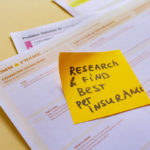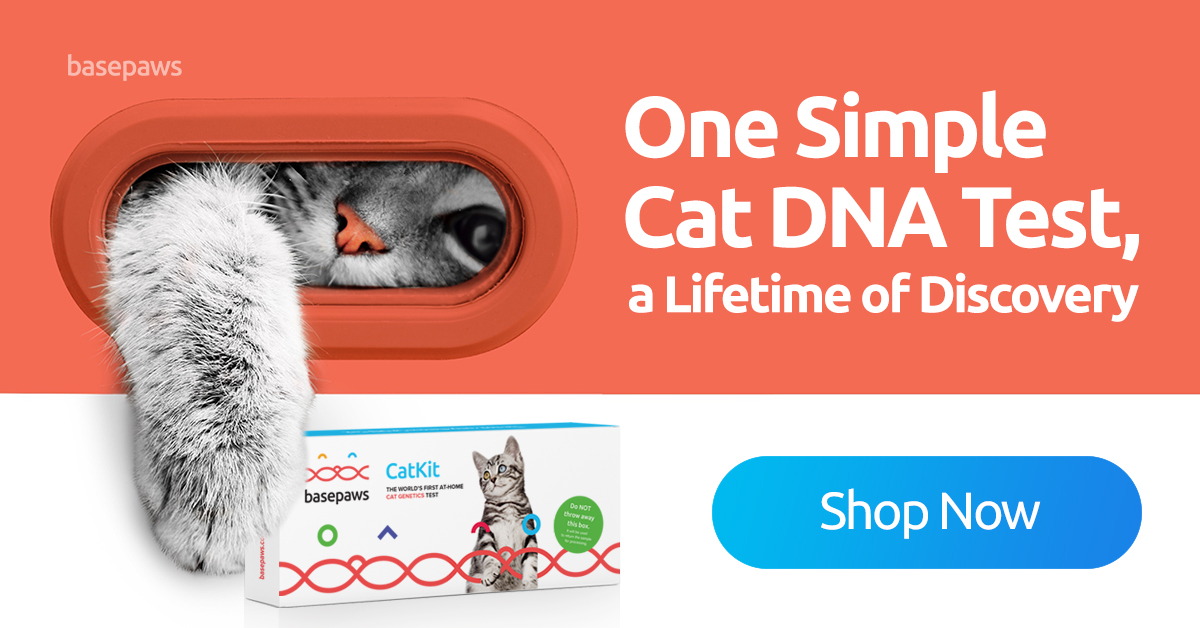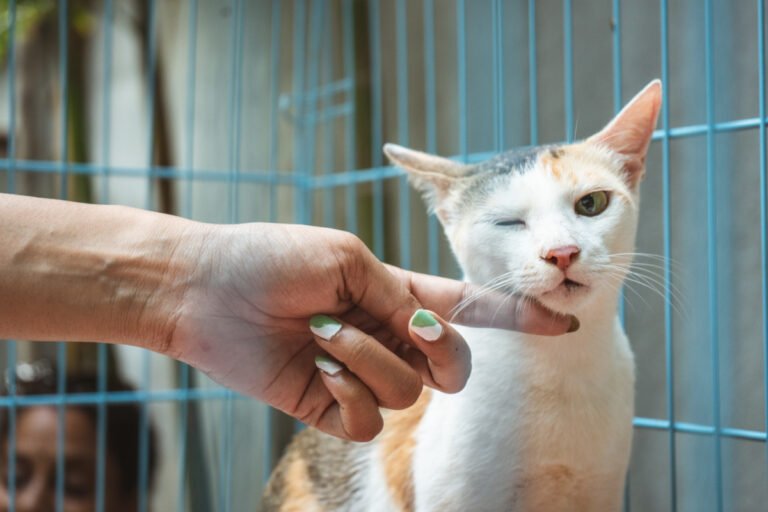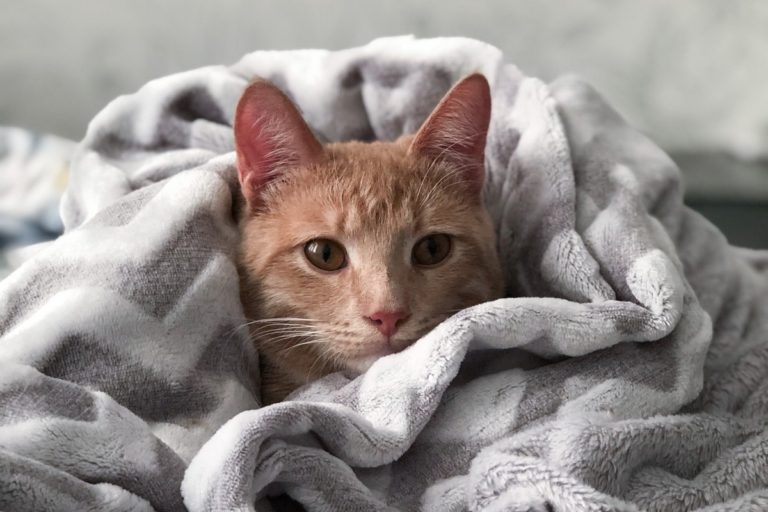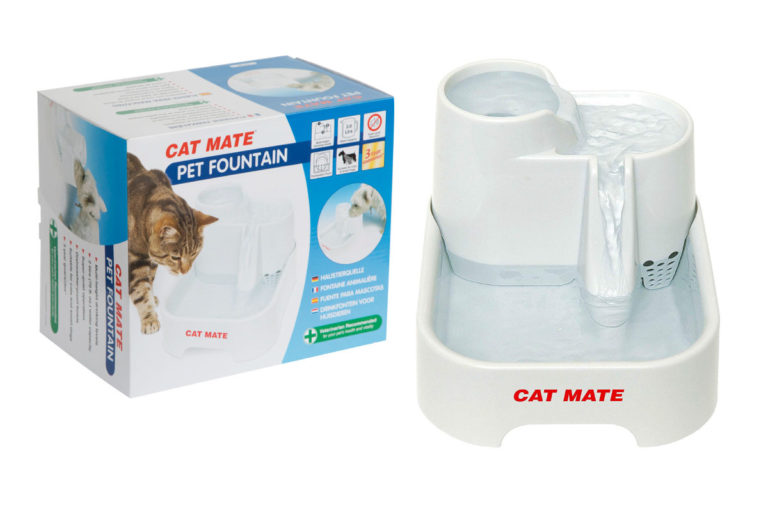Does your cat eat strange things she shouldn’t ingest? She could be suffering from pica. Read this article to answer all your questions about this mysterious disorder and how to handle it in your cat.
DISCLAIMER: This post may contain affiliate links. If you click one of these links and decide to make a purchase, we may receive a small commission. This comes at no extra cost to you and helps to keep the site alive and up to date. If you want more information, please review our Privacy Policy. Thank you for your support!
What Is Pica In Cats
Pica is an eating disorder that results in your cat chewing on and eating things that are inedible or, at least, not meant to be consumed by cats. Cats with pica often choose one of the following things to munch on:
- Plants
- Paper
- Cardboard
- Plastic Bags
- Carpet
- String
- Rubber Bands
- Clothes
- Fur
- Dirt
- Cat Litter
- Spider Webs
As strange as it sounds, pica is actually quite common in indoor cats. Many new cat owners end up taking their kitten to the vet because they have a tendency to suck on fabric, like a pillow or clothes.
This sucking behavior, which is leftover from the time they were being nursed by their mother, is a sign that your kitty was perhaps weaned from her mother a bit too soon. But as long as your cat doesn’t ingest anything, there is nothing to worry about. This type of behavior usually fades over time. In some cases, though, it develops into something more serious.
Related Post: Is Pet Insurance Worth It For Indoor Cats?
Is pet insurance worth it for indoor cats? Read this guide to learn about pet insurance for cats and calculate if it is really worth it for your indoor cat.The Dangers Of Pica In Cats
Electrocution
As long as your cat sticks to chewing on things, she will – in most cases – be just fine. However, if your fur ball likes to sink her teeth into electrical wires, it could lead to catastrophic results. Be careful to hide all your cables using cable gutters so your cat can’t reach them.
Poisoning
An obvious danger of pica is that your cat will ingest something toxic. Check our guide on feline nutrition to see what common foods and substances are poisonous to cats. If you suspect that your cat has been poisoned, contact your vet immediately.
Intestinal Damage
Ingestion of inedible objects can cause actual physical damage to your cat’s intestines. Sharp edges might perforate the bowel. Large objects, or large quantities ingested over time, might cause blockages.
If you believe your cat has eaten something strange, keep an eye on her bowel movements; both the frequency and the consistency. Gently press her abdomen to check for any rigidness. Diarrhea, blood or foreign materials in the feces, or an obvious discomfort in the abdominal area are all signs that you need to take her to the vet.

Why Does My Cat Have Pica
Pica can occur in cats of all ages, but first signs usually appear before cats are five years old. In most cases, the exact cause of your cat’s pica will be difficult to determine. Nevertheless, it is always worth it to take her for a visit to the vet. Through examination and observation together you can start to cross off potential causes until you arrive at a solution.
Genetic Predisposition
Oriental cats seem to be more likely to develop an eating disorder like pica. Both Siamese and Burmese cats show a strong predisposition to actually ingesting things, while other cat breeds will likely only chew on it.
Dietary Deficiencies
If your cat gets especially obsessive around very specific substances, like dirt or cat litter, she is likely missing some required nutrients in her diet. Dirt and cat litter, for example, are full of minerals. Plants are full of dietary fiber. Consider getting some blood work done to see exactly what she is lacking. Then adjust her diet or give her some safe supplements to help her get back on track.
Related Post: Is Peanut Butter Good For Cats?
Peanut butter is great to give medicine to dogs and hide its taste. But is peanut butter good for cats? Or should they stay away from it? Read on to find out.Dental Problems
Chewing on cardboard, plastic or cotton fabric can be a sign that your cat is experiencing some dental discomfort. Young cats that are teething often do this to alleviate the pain of new teeth coming in.
However, if your cat is fully done teething, you might want to pry open that beak and take a look. A build-up of plaque can cause tartar, which in turn can lead to more serious dental problems. If your cat won’t allow you to open her mouth, try smelling her breath. If it smells bad, something is wrong. Take her to the vet for a check-up and a teeth-cleaning.
Medical Problems
Both dietary deficiencies and dental problems can be symptoms of underlying diseases. A cat that eats litter is in all likelihood anemic. That anemia could be caused by an unbalanced diet, but also by kidney disease, diabetes or hyperthyroidism. Another unfortunate cause of (especially, sudden onset) pica are brain tumors. Have your vet do a thorough check-up to find out what exactly is wrong with your precious feline.
Environmental Factors
Sudden changes in her environment, or perhaps even a traumatic event, can shake your cat’s perception of the world to the point where she starts eating strange things seemingly overnight. If you’ve recently moved house, or introduced a new pet into the house, your kitty might just be responding to the stress she is experiencing. Give her time and space to adjust to the new situation. Pay a bit more attention to her with play and cuddles so she can start to make positive associations.
Compulsive Disorder
And then there are also some cats that just can’t help themselves. If your cat is medically, nutritionally and environmentally in good shape, but still chewing on inedible things, then it’s just a matter of dealing with the issue as best you can. Luckily, we have some great tips for you.
Related Post: Best CBD Products For Cats - Our Top 9
Honest, unbiased reviews of the 9 top rated best CBD products for cats, including customer reviews and discount codes.What Do I Do If My Cat Has Pica
Talk To Your Vet
I know I say it a lot, and I will keep saying it: talk to your vet. Chances are, they know more about feline medicine than you or I. Solving this problem requires knowing how it started. Your vet will do a physical examination of your cat and probably draw some blood for further testing. These tests aren’t that expensive and the results should be returned within just a few days.
Remove Temptation
The next step in dealing with your cat’s strange eating behavior is to remove the items she likes to target from her environment. Lock plastic bags away in a cupboard, get cable gutters for your electrical wires, put poisonous plants on high shelves or in closed rooms.
If you do find your cat eating something she shouldn’t, don’t get upset at her. Just redirect her attention to something else and remove the object. Which you should have done in the first place. 😉
Get Some Toys
Speaking of redirection, toys are a great way to offer your cat some stimulation and, more importantly, something to chew on! Puzzle feeders are balls you can fill with treats. As your cat swats it around your living room, the treats fall out so she can eat them. Another great option is to get her a rubber or fabric chew toy. Get one with some catnip in it and watch her go crazy over it.
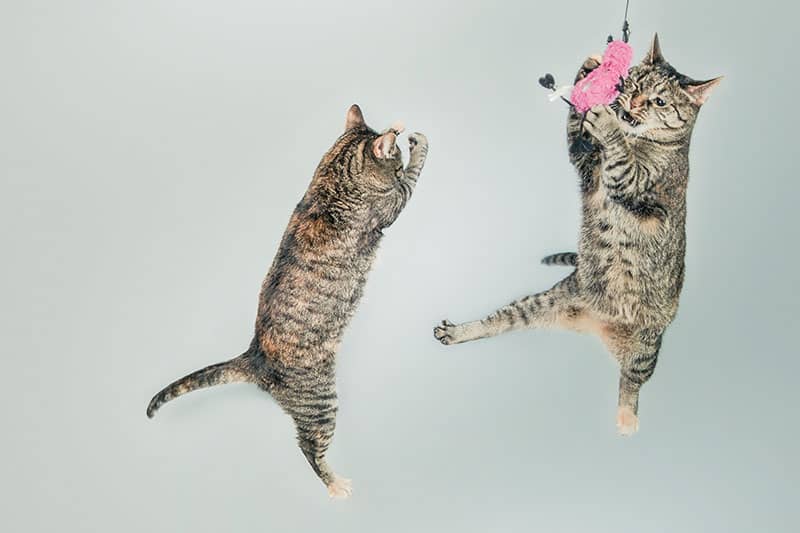
Plant Some Grass
Grass offers a healthy alternative for your cat to chew on. And they are very easy to grow at home!
Germinate some wheat, oat or barley sheets by placing them in a cup of water overnight. Rinse them off and place them in a cup or pot with some wet cotton on the bottom. Cover it with some plastic wrap and place it in the window sill. In a few days time you’ll have a cup of luscious grass for your cat to snack on.
Add More Playtime
Besides toys that your cat can play with on her own, you should also invest more time in playing with her yourself. The extra attention and energy-drainage will help to alleviate any stress she is feeling to cause her strange eating habits.
Stop Free Feeding
The final step to help your cat recover from pica is to get her on a strict feeding schedule. You might think it’s a good idea to leave food out for her all day to tempt her to eat that instead of rubber bands, but this actually works to exacerbate the problem.
Just like children, cats need structure. Knowing that they’ll be fed twice a day at set times gives them a sense of security. And something to look forward to. If you know that you’re going to get a delicious, juicy meal in an hour, that pile of dirt suddenly looks much less appealing.
Final Thoughts
Pica in cats is a strange disorder and there still is much we don’t know about it. Luckily, with some veterinary detective work in most cases we can work out whether the cause is physical, mental or environmental. The right treatment and a caring owner are usually all it takes to get a cat with pica back to healthy eating habits.



